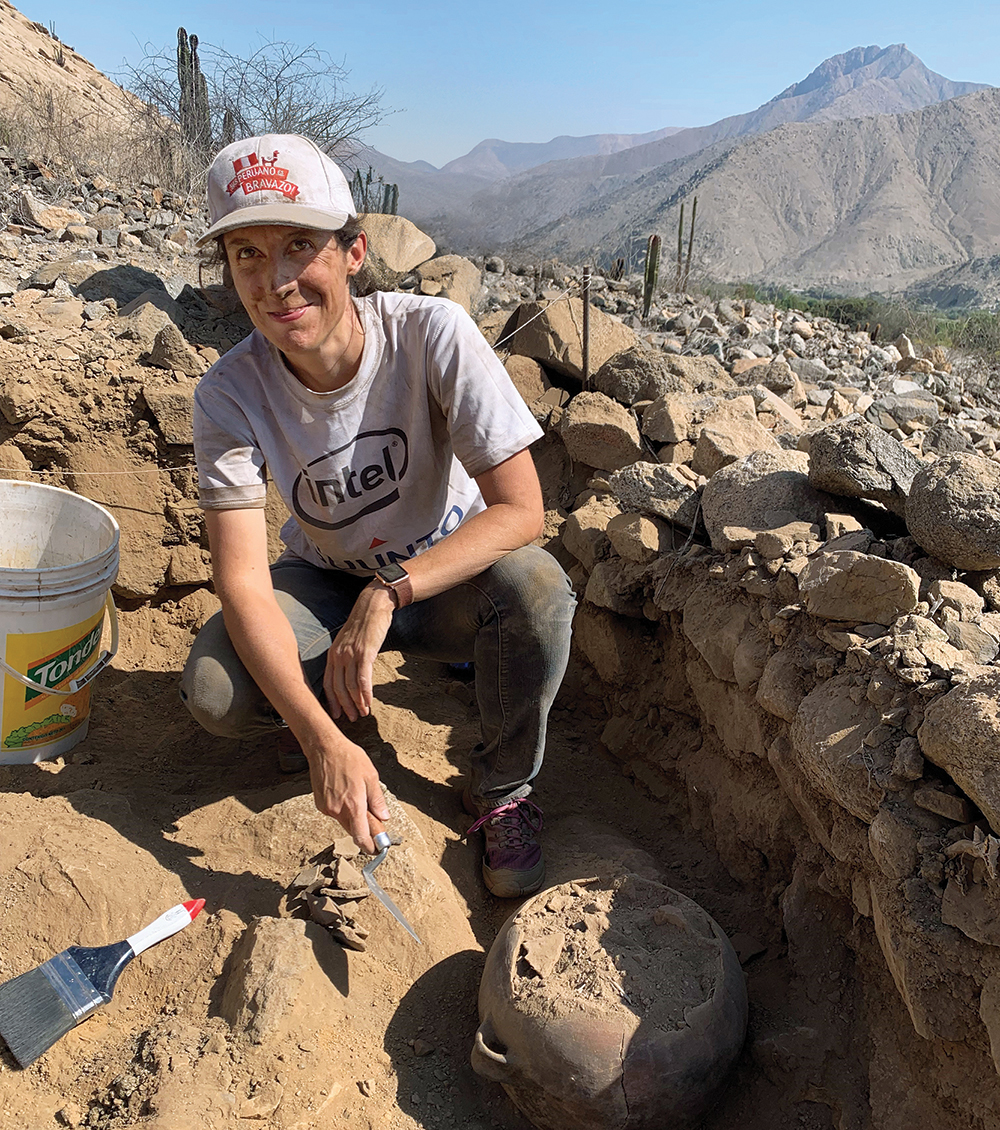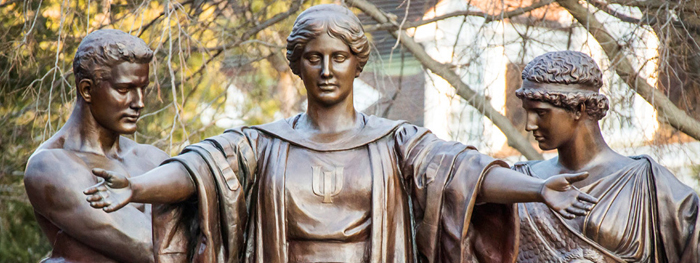In Class: Dig Leader

“We work on the western slopes of the Andes Mountains,” says Kasia Szremski. (Image by Carmella Alarcon)
Archaeology is very much a part of our Center’s work because this is how we understand the histories of indigenous societies in the Americas. Even though my position is primarily administrative, I’ve been able to create some educational opportunities for students, including a summer field school in Peru. In May, I will lead a group of six students on a two-week trip there.
We work on the western slopes of the Andes Mountains between the coast and the highlands at a Chancay site called Cerro Blanco. The Chancay were a small society on the southern edge of the Chimú empire, a big empire on the north coast of Peru. The Inca were located to the south in Cuzco and conquered everybody, including the Chimú, who were their biggest threat.
One of the really exciting things that my students and I found in summer 2022, the last time I led a trip there, were some Inca ceramics. This means we have evidence of both Inca and Chimú ceramics in the same stratigraphic layer. Clearly, there was some very intense interaction at the site. I’m really interested in determining what the Chancay were doing in the middle of this conflict. It was a very small-scale society. It would have been like Luxembourg getting in the middle of a war between the U.S. and Russia.
We found five to six intact vessels—more than I had previously found in my entire career. They probably date to the late 1490s, early 1500s. We were excavating a structure that had been ritually closed. There had been ceramic vessels left with offerings, and a huge bonfire. We found multiple intact vessels in place, stacked on top of each other. The students were thrilled.
The landscape there is just incredible. The students joke that, “This all has to be computer-generated because it is just too pretty.” They also like living in Sayán, a nearby community, and exploring different kinds of local food.
The Krannert Art Museum has a fantastic collection of ancient Peruvian ceramics, and KAM curator Allyson Purpura and I have been working on a complete reinstallation of that exhibition. We are creating an interpretive framework that will highlight the complex and dynamic ways in which groups in Peru interacted contemporaneously, across space and across time. We are also collaborating with colleagues and communities in Peru, so that they can tell their own stories about the vessels.
Edited and condensed from an interview conducted on Feb. 19, 2024


